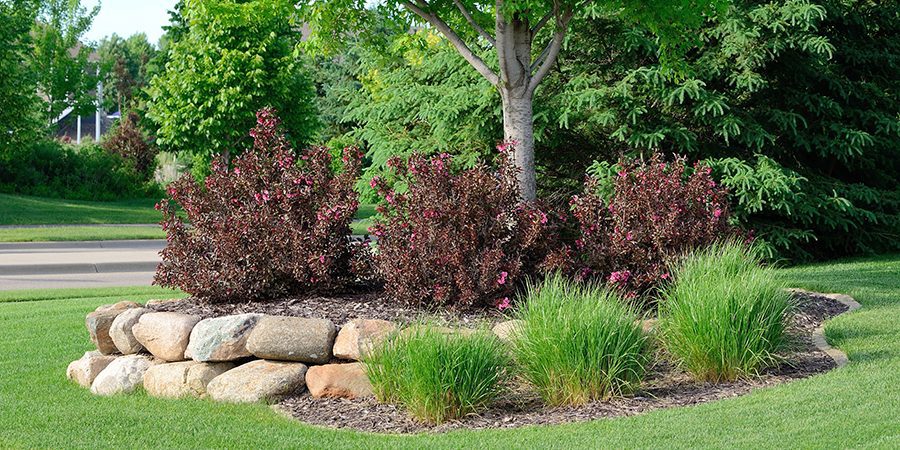Applying Liquid Plant Growth Regulators to Shrubs

Plant growth regulators (PGRs) help promote healthy turfgrass, but they can also help shrubs look (and grow) their best. We’ll cover what PGRs are exactly, the methods used to apply them to shrubs, and the benefits and potential drawbacks of using them.
Overview of PGRs
Plant growth regulators are pretty straightforward. They regulate growth, specifically by slowing down how quickly plants grow. The plant hormones that promote growth are inhibited, meaning less maintenance is required. When less pruning and trimming is needed, it means you don’t have to come back as often, opening up the opportunity to serve other customers.
Application Methods
You can apply PGRs in three different ways.
- Foliar Spray
- Soil Injection
- Soil Drench
1. Foliar Spray
Highlights: Absorbs quickly for fast results
Application Instructions: Mix the PGR of your choice as per the label-recommended concentration. Then, apply evenly on the shrub’s leaves to the point of drip. Be sure conditions are not windy to ensure the application is on target and won’t drift.
Choosing the foliar spray method means that applicators will see results fast, but it may not last as long as the other methods of application. PGRs are metabolized in the foliage. The entirety of the active ingredient is available right away as opposed to being fed over a longer period from the roots/soil. If the shrub’s foliage has been damaged (i.e. infected leaves, insect damage, etc.), PGRs may not be as effective when using this method.
2. Soil Drench
Highlights: Absorbs through the roots
Application Instructions: Apply the PGR of your choice to the soil around the target plant(s)’ root zone after ensuring it is at the correct concentration (soil drenching is a large volume, low concentration method). Be sure that enough is applied to penetrate the root zone and that the soil is relatively moist prior to application.
As the name implies, this method involves a direct application into the soil. Compared to the other methods, this is arguably the easiest one—and it’s still incredibly effective. It’s also a staple of larger operations due to its low costs and time requirements. Once applied to the soil around the target plant(s), PGRs sink down to and are absorbed by the roots. That direct contact helps keep stems from extending.
3. Soil Injection
Highlights: Injected as close to root systems as possible, excellent control
Application Instructions: Inject the PGR of your choice with a soil/root injection probe. Space injection points evenly and use the number of points needed for the size of plant treated.
Our final (common) method is soil injection. It differs from a soil drench in the sense that the PGR will be applied as close to the root zone as possible for even easier absorption. You will gain greater control, but it requires more time than the other methods as well as highly specialized tools. This method is typically used to treat plants that are relatively well-established, since their deep root systems may not be reached by other methods. Due to its precise nature, it’s an eco-friendly solution (the risk of runoff is all but eliminated).
Benefits
- Applying PGRs means less pruning due to slowed plant growth.
- PGRs will help manicured shrubs retain their desired shape for longer, which means less maintenance since it takes more time to grow.
- A PGR like Cutless helps slow down the growth of otherwise fast-growing shrubs like fig ivy, loropetalum, and viburnum.
- For common areas managed by HOAs, a PGR can help you manage driving visibility problems related to overgrown shrubs.
- Overall, using a PGR is much faster and easier than pruning, helping applicators save on time and labor costs.
Potential Drawbacks
- Task-specific tools like injection probes can be costly, which poses a barrier to entry specifically for the root injection method.
- FIFRA classifies PGRs as pesticides, and some states may have stringent restrictions that can impact how much product can be used, so be sure to check your state’s regulations.
- If too much product is used when root drenching, oversaturation can occur, which means reduced efficacy and/or harm to root systems.
- Improper injection practices can severely damage roots and cause permanent damage.
- The foliar spray method is easy, but is not a long-term solution, which may not align with an applicator’s goals (wanting a one-and-done solution as opposed to multiple visits).
Overall, plant growth regulators can do quite a lot to enhance your shrub maintenance program. If you want more tips and helpful articles, sign up for our newsletter.







